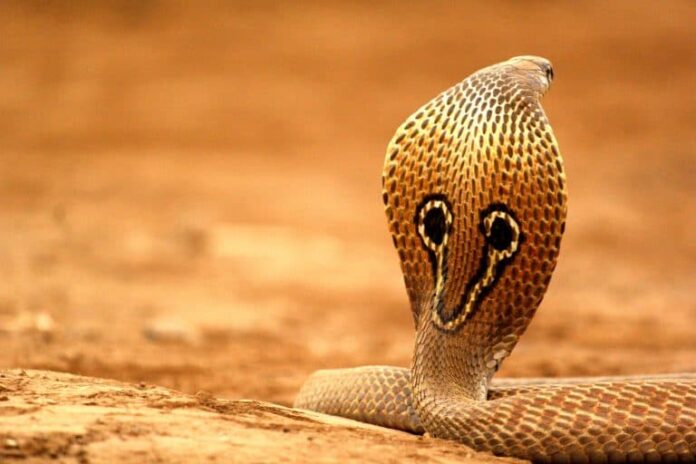Cobras are fearsome creatures that know how to use their venom very well, and we will talk about the largest cobras today. There are around 22 true cobra species in total around the world, and all of them are venomous. The distinctive features of a cobra are definitely its hood along with hollow fangs that are fixed to the top jaw. Plus with their intimidating appearance and the ability to stand upright, no doubt why these snakes are direful. You will find 10 largest cobras in our list below, and we determine their size based on their average length.
10Egyptian Cobra
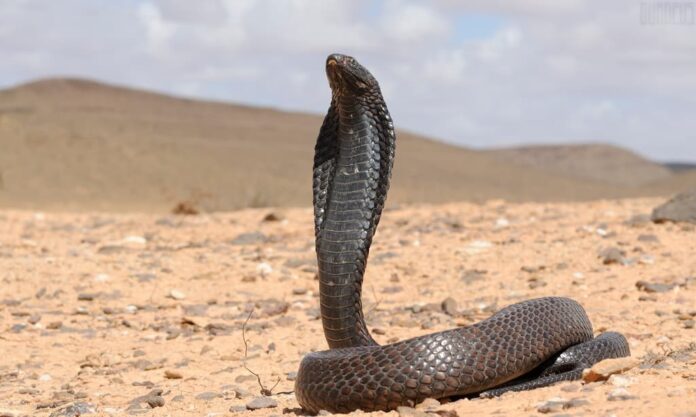
Length: 1.4 meters (4.6 feet)
Known as the asp, the Egyptian cobra is one of the most venomous and largest cobras in the African continent. The ancient Egyptians worshiped these cobras because they represented the fiery eye of Ra. As we can see, the Egyptian cobra is also the symbol on the crown of the pharaohs as well. This cobra species lives in both dry and moist steppes, grasslands, savannas, and semi-desert regions where there are vegetation and water. Their homes are abandoned animal burrows as well as rock outcroppings where they come out to bask in the morning.
The geography of the Egyptian cobras affects how they grow as some of them can reach a length of up to 10 feet. Large and robust, these slithering creatures are never afraid to strike if cornered or threatened. Despite being extremely venomous, these cobras are one of the most popular cobras that snake charmers use. Their long bodies and wide hoods make them the perfect choice for those serpent enchanters. Some hobbyists even have them as pets because they are curious and docile, venom aside.
9Equatorial Spitting Cobra
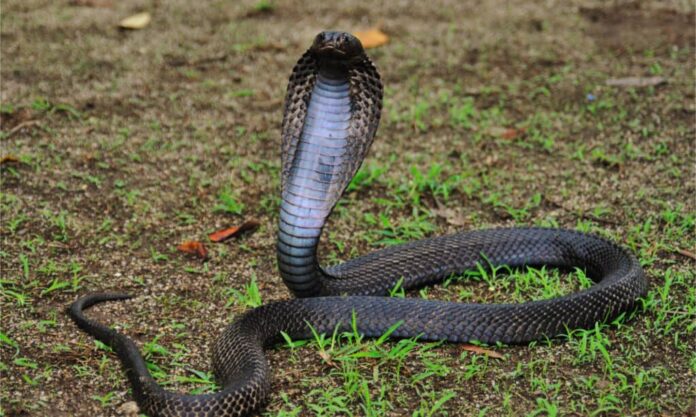
Length: 1.5 meters (4.9 feet)
Just like the name suggests, these cobras do spit their venom as part of their primary form of defense mechanism. At the same time, they are also capable of biting to deliver their highly toxic venom to the victims. These cobras only bite when the attackers do not back off after they displayed some signs. The large adults will stand and expand their hoods then hiss loudly to ward off the intruders. The thing is that they don’t like confrontation so they usually avoid people as much as possible. But before biting, these black spitting cobras will spit the venom into the enemy’s eyes with perfect accuracy.
You can find them in primary and secondary tropical forests of some countries in Southeast Asia. Sometimes they are also found in gardens, parks, and urban areas where encounters with humans are possible. The equatorial spitting snakes are nocturnal, but they appear to be diurnal from time to time. The good thing is that they are not aggressive and will not harm humans if both parties avoid each other. With both deadly venom and large size, the equatorial spitting cobras are one of the most dangerous snakes to fear.
8Monocled Cobra
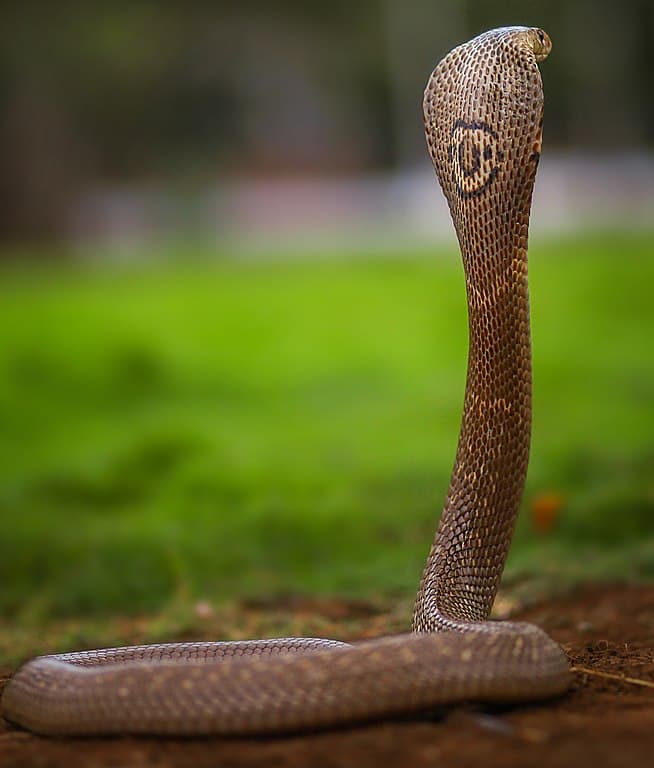
Length: 1.5 meters (4.9 feet)
Received their name from the O-shaped hood pattern, monocled cobras are rather beautiful if we don’t about their venomous bites. Their maximum length is 1.5 meters, but some adults can grow as long as 2.3 meters (7.5 feet). As one of the largest cobras in the world, the size of their fangs is also spectacular. Not different from some cobras, this one also prefers to avoid humans and flee. However, they can raise their body, spread their hood, hiss loudly, and strike for bites if cornered or threatened.
Apart from being able to inflict painful bites, their fangs are also built to spit venom as well. This is why monocled cobras are one of the snakes that cause the highest fatality in Thailand. Because their venom is one of the fastest-acting snake venoms, a bite can cause death within an hour of envenomation. These cobras are native to South and Southeast Asia where they live in forests, grasslands, and scrublands. They are also known to inhabit agricultural lands as well as human settlements where rodents and small mammals are abundant.
7Indian Cobra
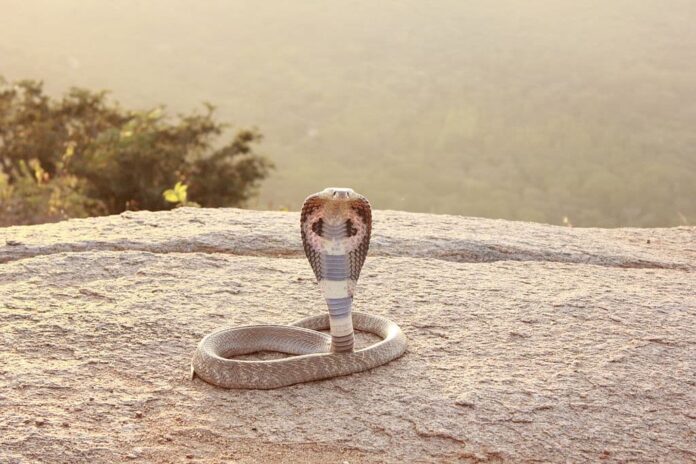
Length: 1.5 meters (4.9 feet)
The Indian cobras are one of the Big Four (largest snake species) that inflict the most snakebites in India. Each bite, a large amount of venom enters the victims through the large fangs. These cobras can spit venom at the intruders to defend themselves, and the venom can cause damage and severe pain. An Indian cobra can spray venom from its fangs for up to 2 meters (6.5 feet) or further. Plus with its long length and sturdy body, the Indian cobra looks very intimidating and scary at the same time.
Some Indian cobras from Sri Lanka can grow up to the length of 2.2 meters (7.2 feet) although quite rare. Their range extends from India to Central Asia and Southeast Asia, and they live in cultivated land, rainforests, and rice fields. The other habits include forests, plains, rocky terrains, urban areas (city outskirts and urban areas), and wetlands. In India, the Indian cobras are greatly feared and respected due to their title as a powerful deity in Hindu mythology. There is also a festival in India called Nag Panchami where cobras are worshiped.
6Cape Cobra
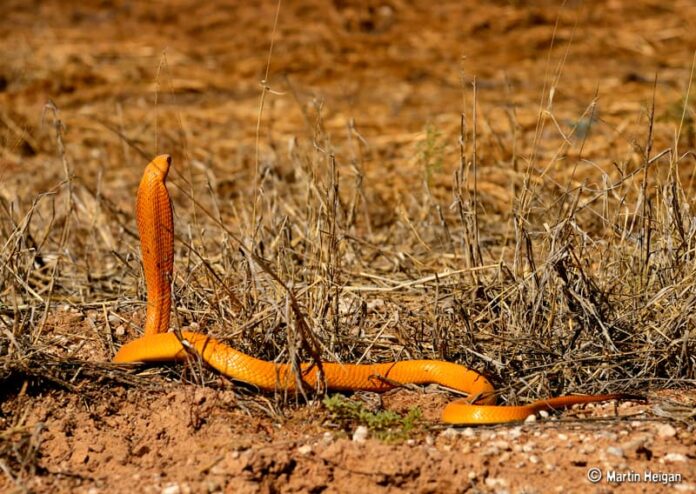
Length: 1.6 meters (5.2 feet)
Being one of the largest cobras in the world is not the only reputation that this species holds. It is also one of the most dangerous cobras that accounts for most of the fatal snake bits in South Africa. While most cobras prefer to avoid humans and escape, this one stands its ground and gets ready to bite. Knowing the power of its venom, Cape cobras will form a hood and remain in place instead of backing down. The bite from this serpent causes progressive weakness that may also affect breathing in less than 30 minutes. Without immediate medication, it can result in severe conditions.
Cape cobras are quite common in South Africa, especially through the Western Cape. They are active during the day, foraging for food such as small mammals like rodents. When not active, it hides in holes and under large objects that can handle their body length and size. Sometimes these snakes escape the heat by seeking somewhere cooler in humans’ homes where they often come into contact. Cape cobras are shy but very quick-moving, so it is better to remain motionless or step back if you see one.
5Red Spitting Cobra
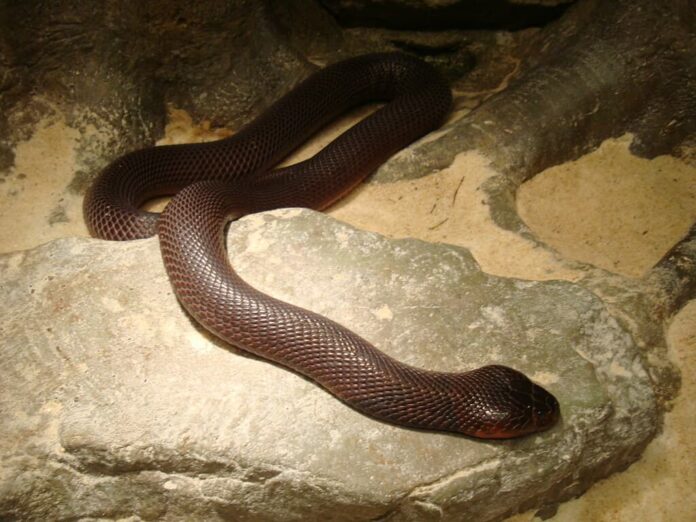
Length: 1.9 meters (6.2 feet)
By the name, you can already tell what this cobra species can do to defend itself. It is capable of shooting painful venom at its enemy, and it never misses the target thanks to its sharp vision. Once the venom touches the eyes, the nerve toxins and other harmful substances burn the cornea which is very painful. Depending on how close the victim is to the cobra, sometimes the venom in the eyes can also cause permanent blindness. As for the bite, their sharp and narrow fangs can penetrate the flesh and keep hold if they have to.
These snakes are dangerous because they often come into people’s houses at night and may bite people. The bites can cause blistering, pain, swelling, and possible tissue damage. With bright salmon red body and black throat, red spitting cobras are one of the most attractive species in the cobra family. However, they are not always in this color as there is variation depending on their geography. In some parts of Africa, their color can be orange-red with black or dark blue throat bands instead. These cobras are native to Africa, mostly in the eastern part of the continent where they live in temperate and tropical areas.
4Black-Necked Spitting Cobra
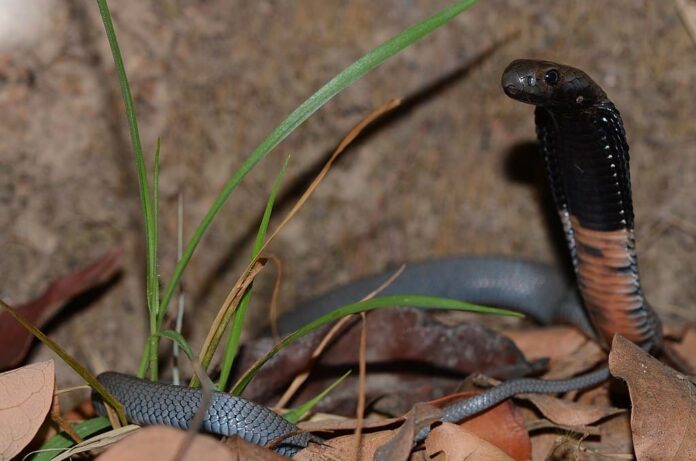
Length: 2.2 meters (7.2 feet)
A venomous cobra that can grow this long is already the obvious sign that shows every reason to stay away from it. The cool yet scary thing about them is that they can spit venom that goes over 7 meters (23 feet). As expected from the expert in venom spitting, their accuracy is unbelievably precise if they target the eyes of the enemies. When threatened, a black-necked spitting cobra will spread its hood and spit its venom before striking without hesitation. In some cases, they chew when biting so the tearing or untidy punctures are visible on the victim’s skin.
The black-necked spitting cobra is a species that is found mostly in sub-Saharan Africa. They typically inhabit the savannas and semi-desert regions but are also common in clear forests, moist savannas, and near rivers or streams. In southeastern Nigeria, these cobras live in dry grasslands, fragmented forests, manmade farmlands, plantations, and suburban areas. Sometimes they live so close to human settlements that they are common in small towns or villages. The adults live in holes or termite mounds and the young ones are able to climb trees.
3Ashe’s Spitting Cobra
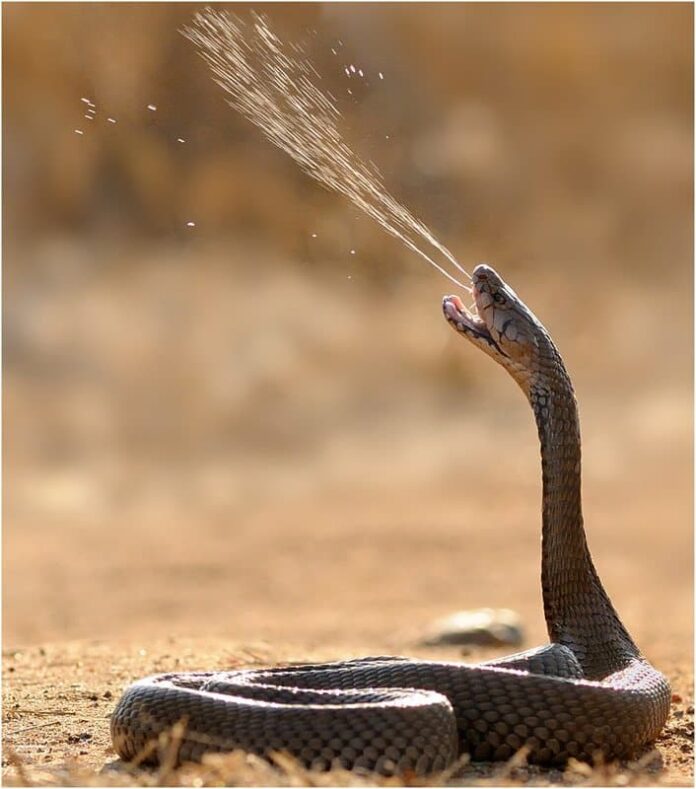
Length: 2.7 meters (9 feet)
Here you are looking at the largest spitting cobra species that is so large and venomous all in one. This giant spitting cobra is native to Africa, living in the dry lowlands of eastern and northeastern Africa. Apart from size, its appearance is not so difficult to recognize. An Ashe’s spitting cobra has a big head with a heavily built and a long body with a length of 2 meters. Its color is in different shades of brown depending on the specimen, ranging from dark brown and light gray to pale mustard.
Because of their large body, these giant cobras possess enough venom to kill at least 15 people per bite. It can inject a large amount of venom in each strike, and things go the same when it spits its venom. The dosage of antivenom to treat the bite is higher than average, and failure to do so may result in serious consequences. In case of late medication, the tissue damage resulting from the bites can lead to disfiguration for survivors. Permanent blindness is very likely if the venom remains in the eyes without proper treatment.
2Forest Cobra
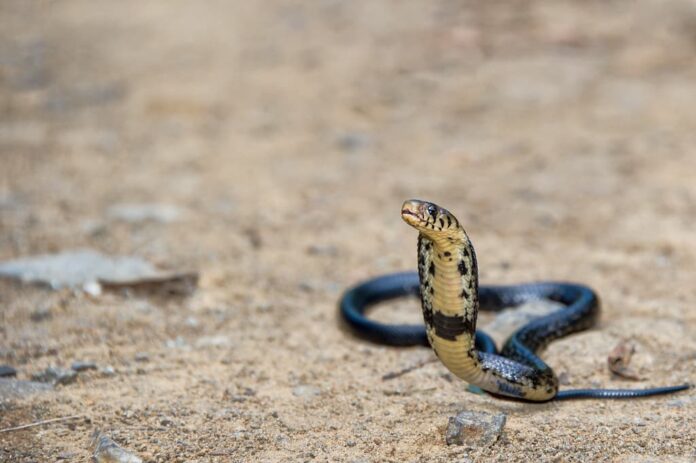
Length: 3 meters (10 feet)
Forest cobras are not only one of the world’s largest cobras but also one among the largest cobras in Africa. Just like the name suggests, they live in forests as well as shrublands in many countries throughout sub-Saharan Africa. The special thing about these serpents is that they are highly adaptable with their ability to live in different habitats. Human development also plays a part in their adaptation to habitats due to deforestation which leads to their habitat loss. As long as there is abundant prey to feed on and water resources are nearby, they can survive.
Another fascinating thing is that these terrestrial snakes are agile and quick, and they can also climb trees. In some regions, forest cobras are also capable of swimming to forage for fish which makes them semi-aquatic. When threatened, a forest cobra will expand its hood and lift its front body far off the ground to appear larger. It is able to strike very quickly from a great distance, and it is not afraid to bite. The forest cobras are highly venomous, and one bite from them can lead to many severe health problems.
1King Cobra
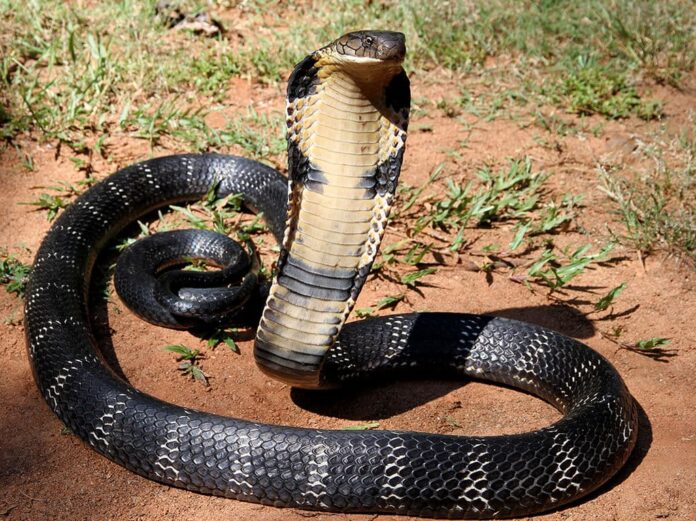
Length: 5.5 meters (18 feet)
King cobras, the longest venomous snakes in the world with characteristics that do justice to their name. This is probably the first time that you read about this serpent’s ability to stand up and look a full-grown person in the eye. A king cobra is very large, long, and strong, this is why it is feared by many people. It can move forward to attack even when it lifts one-third of its body off the ground. The venom of a king cobra contains a large amount of neurotoxin that is enough to kill 20 people in a single bite. It affects the respiratory centers in the brain which cause cardiac failure and respiratory arrest.
Due to their shy nature, king cobras will avoid humans whenever possible despite their ability to kill. These large cobras live mainly in plains and rainforests of India, Southeast Asia, and Southern China. In some areas, they also inhabit bamboo thickets, forests, mangrove swamps, or in rivers. King cobras are the only snakes in the world that build nests for their eggs. After laying eggs, the mother, which becomes more aggressive during this period, guards her eggs until the babies hatch. Their population is not doing so well in the wild due to human activities and threats. Apart from killing them for food, skin, and medicinal purposes, people also kill them on sight due to fear. Heavy deforestation affects their habitats, making them a vulnerable species at the moment.
Related Post: Largest Beetles In The World

